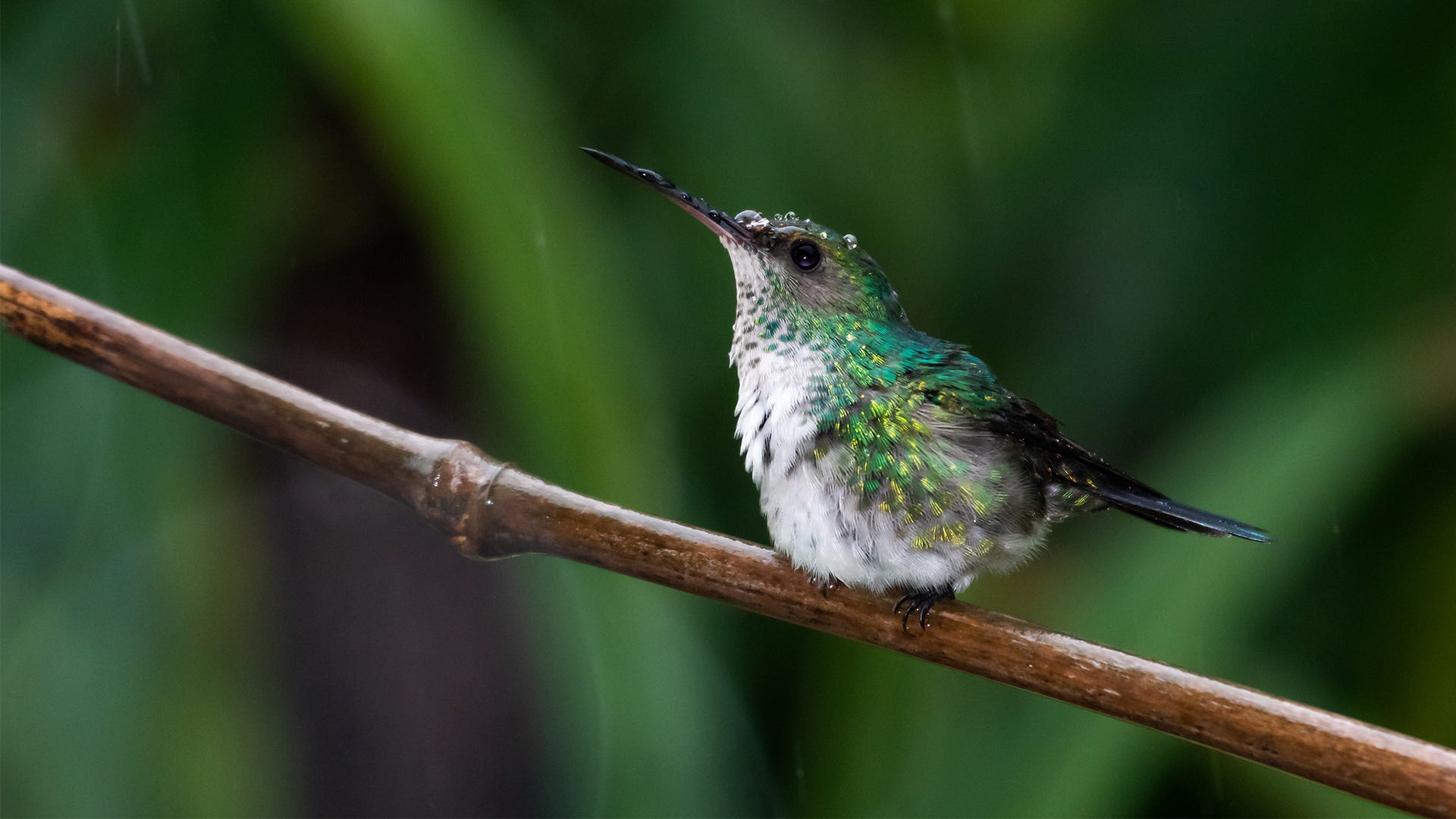Hummingbirds and hurricanes have been intertwined for hundreds of thousands of years. When bad weather hits, hummers hunker down as tightly as they can in the most sheltered place they can find, often in dense vegetation on the downwind side of a tree trunk. Their feet are very strong and can hold onto a twig very tightly when the wind blows.
Hummers have very little surface area and probably find it easier to get out of the wind than larger birds do.
The majority of hummingbirds will survive hurricanes over land unscathed–as is shown by folks who have reported hummers feeding heavily when the eye of the hurricane passes over, and by those who have observed them feeding as soon as the storm passes by but when winds are still strong.
Some enthusiasts in hurricane-prone areas secure their feeders with wire or duct tape prior to the advance of a storm so the birds can take sugar water whenever conditions allow. (Be sure to remove the duct tape after the storm, lest hummingbirds get stuck to it.)
All said, hummingbirds are not the delicate little creatures some folks perceive and can survive rough conditions. A far bigger danger than hurricanes over land are unexpected northbound winds in the Gulf of Mexico during migration. A bird that heads out into a hurricane is destined to become barracuda food. Many Ruby-throated Hummingbirds probably succumb to the dangers of long-distance migration, of which hurricanes are a major part.
Somewhere around 70-80% of all young Ruby-throated Hummingbirds produced this year will die before next spring; otherwise, we’d be up to our eyebrows in hummingbirds. Keep your feeders clean, enjoy the ones that make it, and don’t worry about those that succumb to the forces of nature.








